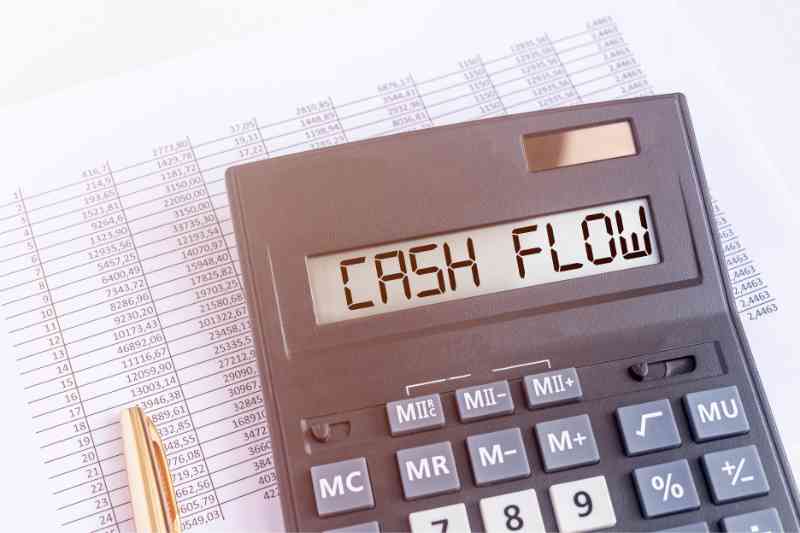Key takeaways
- Cash flow in real estate is the flow of money in and out of your property.
- Net cash flow in real estate is calculated by subtracting the income that your property accrues from your total expenses.
- Investing in capital expenses that improve your building’s operations is an important part of building cash flow at your property.
- The five best tips for maximizing cash flow include purchasing property at a low price, increasing rent, slashing operational costs with proptech, creating multiple streams of income with mixed-use properties, and reducing tenant turnover.

Disclaimer: This content is for informational purposes only, you should not construe any such information as legal, tax, investment, financial, or other advice. Nothing contained on our site constitutes a solicitation, recommendation, endorsement, or offer by ButterflyMX or any third-party service provider. ButterflyMX is not a financial adviser. You should always seek independent legal, financial, taxation, or other advice from a licensed professional.
Are you interested in breaking into the lucrative world of real estate investment? If so, you know that meeting various real estate metrics is one of the major keys to success. And perhaps one of the most important performance metrics to stay on top of is cash flow in real estate because it measures how profitable your property is.
Read on to learn what cash flow in real estate is and how to calculate it. Then, explore how to build cash flow in your rental properties. Finally, discover five tips for maximizing cash flow in real estate.
In this post, we cover:
- What is cash flow in real estate?
- How to calculate cash flow in real estate
- How important is cash flow in real estate?
- How do you build cash flow in real estate?
- 5 tips for maximizing cash flow in real estate
What is cash flow in real estate?
Cash flow in real estate is the movement of money in and out of your property. So, cash flow measures the income that your property accrues, as well as the money you spend on maintaining it.
There are three types of cash flow:
- Positive cash flow. Positive cash flow is when the income your property generates is greater than your property expenses.
- Negative cash flow. In contrast, negative cash flow is when your expenses exceed the income your property produces. As a result, this means your property is losing money.
- Zero cash flow. Zero cash flow occurs when your property’s rental income is equal to the amount you spend on it.

How to calculate cash flow in real estate
Cash flow is the difference between the total income your property accrues and its capital expenses.
Real estate cash flow formula:
Generated income – property expenses = cash flow
Other valuable real estate metrics include:
- NOI. This metric measures your net operating income by calculating operating expenses minus the total revenue.
- ROI. Return on investment can be calculated by dividing your building’s net income by the total cost of investment.
- CapEx. CapEx in real estate measures the total expenses that you incur to improve your building. These improvements often involve major repairs and investments in new technology.
- Cap rate. The cap rate is calculated by dividing your property’s NOI by the current market value. Then, multiply that by 100.
Explore how to calculate NOI in real estate:
How important is cash flow in real estate?
Real estate cash flow is important because it’s the main indicator of how profitable your property is.
What’s more, expenses that improve your building’s operations are tax deductible.
These tax-deductible capital expenses include but aren’t limited to:
- Maintenance and repairs. Keeping up with routine maintenance ensures that your building stays desirable to residents and prospects. It also ensures that your building operates smoothly.
- Access control. Access control systems enhance security for your residents and staff — and make gaining entry to your building seamless.
- HVAC replacement. Keeping up with HVAC replacements reduces the risks of fire hazards and ensures that your HVAC systems are working properly.
- Utilities. Rental properties must provide basic utilities for residents. These rates vary by usage, but you can opt for a fixed rate.
- Landscaping and pest control. Investing in landscaping and pest control not only keeps your property aesthetically appealing but also reduces property damage due to pests.
- Property management fees. If you’re not managing your own buildings, you probably have a team of property managers. Property managers usually charge about 10% of your total rental income.
How do you build cash flow in real estate?
There are several ways to build cash flow at your property, but the most important way is to invest in your building and make necessary upgrades. As a result, this will ensure that your property is not only competitive but stays desirable to prospects.
5 tips for maximizing cash flow in real estate
Wondering how to maximize your real estate investment and ensure that your building stays profitable?
Here are 5 tips and tricks to boost cash flow at your property:
- Purchase property at a low price
- Increase rent
- Cut costs with proptech
- Create streams of income with mixed-use properties
- Reduce tenant turnover
1. Purchase property at a low price
Purchasing a property at a low price ensures a greater return on your investment. As a result, you can use this extra cash to make valuable upgrades to your building or invest in additional properties.
2. Increase rent
Increasing rent ensures that your property is as profitable as possible. However, you have to justify increasing rent costs by making upgrades to your property that are desirable to residents. This may include investing in better amenities or a building-wide access control solution.
3. Cut costs with proptech
Investing in proptech helps to automate repetitive tasks for staff and improves your building’s operational efficiency. This investment is crucial when planning and budgeting for your property’s capital expenditures. What’s more, these investments help save you money over time by streamlining your building’s operations.
Discover how to calculate capital expenditures in real estate:
4. Create streams of income with mixed-use properties
Generating multiple streams of income with mixed-use properties could be as far-reaching as having a restaurant or coffee shop in your apartment building that produces its own stream of income. This will boost the average cash flow on your rental property.
Consider renting out rooftop space for events, or having a vehicle access control system that monetizes parking for non-residents at your building to diversify income streams.
5. Reduce tenant turnover
Reduce tenant turnover by making desirable upgrades to your building. This incentivizes residents to stay at your property, leading to more long-term leases.
Tenant churn is expensive and can easily result in negative cash flow. So, it’s important to reduce the time your units are vacant.
Additionally, these upgrades help set your property apart from your competitors, which motivates more prospects to apply for vacant units at your building.







